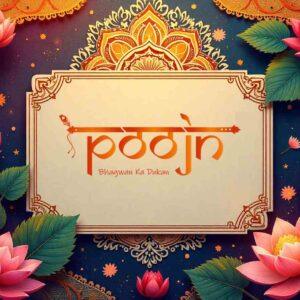
The Putrakameshti Yagna is a revered Vedic ritual, deeply embedded in ancient Hindu traditions. This sacred ceremony, intended to bless couples with a male child, holds profound cultural significance. While the ritual’s roots can be traced back to ancient scriptures like the Ramayana, modern conveniences like online shopping make acquiring authentic items for this ritual easier than ever.
Historical Context and Significance
The Putrakameshti Yagna finds mention in ancient Hindu texts, including the Ramayana, where King Dasharatha performed it to be blessed with sons, ultimately leading to the birth of Lord Rama and his brothers. In ancient India, a male heir was considered essential for carrying forward the family lineage and performing specific religious rites. Vedic rituals like Putrakameshti were not merely about fulfilling familial desires; they were deeply connected to dharma (righteousness) and karma (actions and consequences), reflecting the spiritual beliefs of the time. This practice underscores the cultural emphasis placed on progeny and lineage within traditional Hindu society. Families sought divine intervention through these rituals to fulfill their societal roles and spiritual obligations. Understanding the philosophical underpinnings of Putrakameshti allows us to appreciate its historical relevance and its place within the larger tapestry of Hindu culture.
The Ritual Process of Putrakameshti Yagna
The Putrakameshti Yagna is an intricate Vedic ritual, steeped in cultural significance. This ceremony seeks divine blessings for the gift of a son. The process unfolds in several stages, each holding unique meaning.
Preparatory Steps
Before the commencement of the yagna, meticulous preparations are undertaken. The couple and the officiating priest, or purohit, engage in spiritual and physical purification. A serene and focused state of mind is paramount. The ritual is conducted in a sanctified space, typically a temple or a designated area within the home.
Materials and Offerings
Specific materials are essential for the Putrakameshti Yagna. Items such as ghee (clarified butter), grains, and particular types of wood are carefully gathered. Each offering carries symbolic weight and plays a vital role in the ceremony. Agni, the sacred fire, takes center stage in the yagna, acting as a divine messenger carrying offerings to the gods.
Role of the Priest
The priest presides over the ritual with precision and reverence. He chants specific mantras, invoking divine blessings for progeny. These mantras possess deep spiritual meaning and are believed to hold divine power. The priest’s expertise ensures the ritual adheres to Vedic guidelines, preserving its sanctity.
Involvement of the Couple
The couple actively participates in the yagna, seated near the sacred fire, offering prayers and making offerings together. This symbolizes their shared commitment and fervent desire for a child. Their faith and devotion are integral to the ritual’s efficacy.
Importance of Agni
Agni, the sacred fire, transcends its physical form within the yagna. It embodies purity, transformation, and the presence of the divine. It is believed to purify the offerings and convey them to the deities. Agni’s role in the Putrakameshti Yagna highlights its crucial place in Hindu rituals.
Traditional Practices and Beliefs for Son Conception
In Hindu tradition, the desire for a son has deep cultural roots, tied to lineage and rituals. While science clarifies that a child’s sex is determined by the male’s sperm, traditional beliefs propose practices that might influence this. It’s crucial to remember these methods are based on faith and tradition, not scientific fact.
- Garbhadhana Samskara: The first of sixteen Hindu sacraments, focusing on the sacred act of conception. Rituals involve purifying the body with mantras and emphasize a scientific and hygienic approach to intercourse. Traditionally, consuming boiled rice with meat or other protein and butter was believed to aid in conceiving a learned son.
- Timing of Intercourse: Ancient texts suggest specific days after menstruation’s start for male conception, such as days 6, 8, 10, 12, 14, and 16. These are based on traditional beliefs and not scientific evidence.
- Prayers and Mantras: Reciting specific slokas or Sanskrit verses invoking deities like Lord Vishnu is believed to bless couples with a healthy child. The Santhana Gopala Mantra, dedicated to Lord Krishna, is also chanted for conception.
- Ayurvedic Practices: Some Ayurvedic traditions propose that an ovum from the right ovary is more likely to attract Y-chromosomes, possibly leading to a male child.
- Science of Breath Method: This involves specific positions for the mother (right side) and father (left side) during conception, believed to influence the sperm towards producing a Y-chromosome.
Cost and Accessibility
The cost of a Putrakameshti Yagna varies depending on location, the ritual’s scale, and the chosen priest. Costs in traditional settings may differ from those in urban areas. Thankfully, online platforms have simplified access to ritual services. Community temples and religious organizations often provide resources and guidance, making this yagna accessible to families across different economic backgrounds.
Notable Locations for Putrakameshti
Certain locations in India hold special significance for performing the Putrakameshti Yagna. Temples dedicated to deities like Lord Shiva and Lord Narayana are often chosen. The Rameswaram Temple, where King Dasharatha is said to have performed the yagna, is a notable example. Pilgrimage plays a vital role in the spiritual journey, and devotees travel to these sacred sites with hope and devotion.
Contemporary Relevance and Ethical Considerations
In modern times, the Putrakameshti Yagna prompts discussions around gender preference and ethics. While honoring cultural traditions is important, contemporary views on gender equality must also be considered. Religious leaders play a role in navigating these discussions, fostering dialogue between tradition and modern values. Legal frameworks also influence gender preference and family planning, promoting equality. Understanding the Putrakameshti Yagna within its cultural framework, while acknowledging ethical perspectives, helps us find its place in contemporary practice.
How Poojn.in Can Assist You
Poojn.in provides comprehensive support for the sacred Putrakameshti ritual, offering authentic puja items and expert guidance.
- Pre-assembled Putrakameshti Puja Kits: We offer convenient kits containing all the necessary items. No need to search for individual components – everything you need is thoughtfully packaged together.
- Havan Kunds and Ritual Items: Find pure copper and brass havan kunds for the sacred fire, premium ghee from certified sources, traditional dhoop and agarbatti sets, authentic wooden puja items, and pure cotton wicks.
Our knowledgeable team can assist you in selecting appropriate items and guide you on their proper usage. Reach us at 03369029784 or WhatsApp us at 9476142738 for personalized guidance. We deliver across India with secure packaging to ensure the sanctity of your items. All products are quality-assured and come with proper storage instructions. Our online platform simplifies the process of acquiring traditional puja samagiri, maintaining their authenticity and sanctity.
Shop Now: Visit www.poojn.in to explore our complete range of Putrakameshti ritual items and puja essentials. Need a havan kund? We have those too! Looking for specific herbs or dhoop? Browse our extensive collection. You can find everything you need right here.
Note: For specific ritual procedures and auspicious timings, consult your family priest or spiritual advisor.
Conclusion
The Putrakameshti Yagna stands as a testament to the rich traditions and deep cultural roots of Vedic rituals. While its primary objective is seeking a son’s blessing, the yagna embodies so much more than this desire. It signifies faith, devotion, and the eternal connection between divine grace and human aspirations. Today, as we navigate the balance between upholding tradition and embracing modern values, honoring the spiritual essence of rituals like this is important. Through mindful reflection and open dialogue, families can engage in these practices while respecting contemporary values of equality and inclusion. Whether performed within the sacred walls of a temple or facilitated by modern online platforms, the Putrakameshti Yagna offers hope and spiritual solace to those who seek it, gracefully bridging the past with the present.
Explore our collection of wedding items for all your ceremonial needs.


